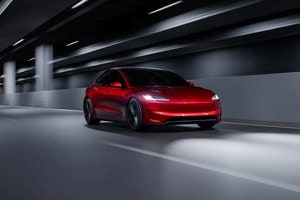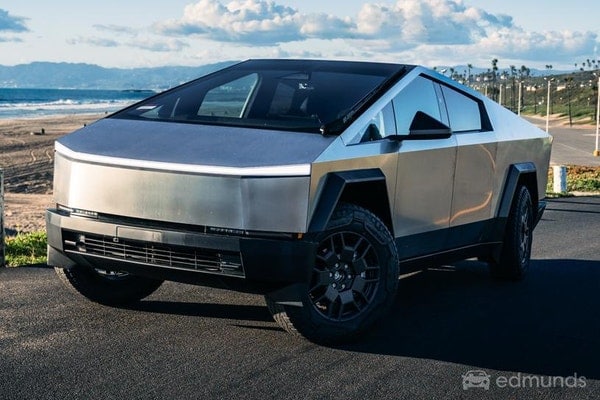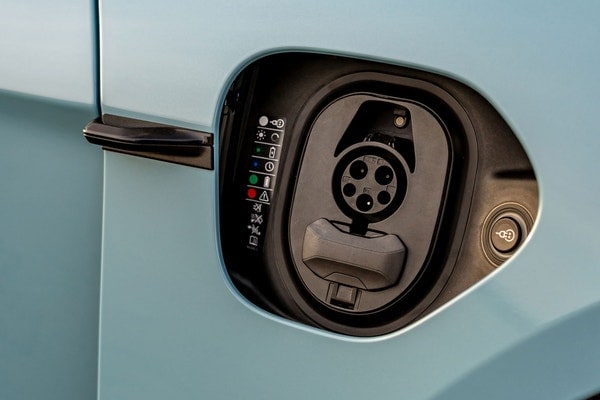Used 2016 Tesla Model S P100D Sedan Review
Consumer reviews
Read what other owners think about the 2016 Tesla Model S P100D Sedan.
Most helpful consumer reviews
A.M.A.Z.I.N.G!
So great this is our 3rd Tesla
Edmunds Summary Review of the 2016 Tesla Model S P100D Sedan
Pros & Cons
- Pro:Impressive range on higher-end models
- Pro:strong performance across the board from all models
- Pro:advanced technology features that aren't available from other luxury brands
- Pro:abundant cargo space for a sedan
- Pro:available seven-passenger configuration makes it more family-friendly than most luxury sedans
- Pro:free access to Tesla's expanding Supercharger charging station infrastructure.
- Con:Lacks the convenience, familiarity and luxury polish of similarly priced sedans
- Con:unproven reliability record
- Con:small dealer network means you might not live near a service center.
Full Edmunds Review: 2016 Tesla Model S Sedan
What’s new
Instead of introducing changes on a model-year basis as other automakers do, Tesla phases in rolling updates, especially when it comes to software and electronics. In 2016, the Model S received revised front-end styling similar to that found on the Model X SUV and an enhanced cabin air filtration system, adaptive headlights and Autopilot semi-autonomous driving technology. The company also phased out the 70 and 70D variants and introduced the entry-level 60 and 60D, which are simply software-limited versions of the 75 and 75D, respectively.
Edmunds says
As the only true luxury sedan that's an electric vehicle, the 2016 Tesla Model S is unique. It delivers tremendous acceleration, reasonable range, unusual features and more functionality than you might expect. It's Tesla's best offering and deserves your attention if you're shopping for a premium electric vehicle.
Vehicle overview
Perhaps no other car carries the torch of electric propulsion as visibly as does the 2016 Tesla Model S. It’s a battery-electric luxury sedan at the premium end of the spectrum, with style, performance and a price to match. Being from a nascent automaker that doesn’t adhere to traditional ways of doing things, the Model S has developed an enviable following.
As with all electric vehicles (EVs), driving range and charging time are ever-present considerations. The Model S delivers the most range of any EV on the market, offering between 210 to 294 miles of range. This, combined with Tesla’s free national network of Supercharger rapid chargers, makes the Model S a viable steed for longer trips. Traditional luxury sedans by its competitors offer far more range and much faster refueling, but the Model S still sets the benchmark among EVs.
There’s little to dispute the Model S’ performance. It's impressively quick, especially from low speeds, with certain versions accelerating as rapidly as some of the world’s quickest cars. We’ve clocked a P85D to 60 mph in 3.5 seconds, and Tesla claims the range-topping Ludicrous Mode-equipped P90D will do the deed in 2.8 seconds. The entry-level 60D is still acceptably quick, and while the price point isn’t exactly inexpensive, don’t forget to factor in its low running costs and the federal and state incentives (where applicable).
We lived with a 2013 Tesla Model S for 18 months and found numerous reliability issues, though that was a few years ago during the company’s formative period where growing pains were apparent. Repairs under warranty were performed swiftly. It’s a very competent car dynamically, and though it offers some unique features such as over-the-air updates, its cabin isn’t as opulent as other cars in its class.
Then again, the other cars in its class don’t offer electric-only propulsion. Its gasoline-fed contemporaries include the 2016 Audi A7, 2016 BMW 7 Series, 2016 Mercedes Benz S-Class and the 2016 Porsche Panamera. All offer a variety of engines and trim levels and excel in various ways, but if it’s an EV you’re after, the 2016 Tesla Model S is in a class of one. The only other EVs that approach it are the 2016 BMW i3 and 2016 Volkswagen e-Golf. They’re both worth your attention if you’re looking for less expensive, moderately upmarket offerings with plugs.
2016 Tesla Model S models
The 2016 Tesla Model S is a large, four-to-seven-passenger luxury sedan. It's available in six variants: 60, 60D, 75, 75D, 90D and P90D. The digits in each trim level refer to the kilowatt-hour (kWh) capacity of its battery (which directly impacts range), while the "D" denotes the dual-motor, all-wheel-drive models. Be aware that Tesla updates the Model S on an ongoing basis rather than by model year, so what follows might not necessarily reflect the latest offerings.
The Model S 60 comes with 19-inch wheels, all-season tires, LED head-, fog- and taillights, navigation, cruise control, access to the Supercharger network, dual-zone automatic climate control, a 17-inch touchscreen, a rearview camera, keyless entry, parking alerts, power-folding and heated side mirrors, blind-spot warning, automatic emergency braking, lane departure warning, cloth and premium vinyl upholstery, heated eight-way power front seats (with four-way power lumbar), 60/40-split folding rear seats, a power tilt-and-telescoping steering wheel, Bluetooth phone and audio connectivity, and a seven-speaker sound system with dual USB ports (media and charging) and HD radio. A cellular connection, internet radio and Wi-Fi connectivity are also included, as are a universal mobile connector for charging (with 110-volt, 240-volt and J1772 adapters).
The Premium Upgrades Package includes adaptive LED headlights, an enhanced cabin air filtration system, leather interior surfaces (when leather seats are selected), LED ambient interior lighting, a power liftgate, lighted door handles and LED cornering lights. The Ultra High Fidelity Sound package adds a 12-speaker sound system and includes satellite radio. A Subzero Weather package adds a full row of heated rear seats, a heated steering wheel, wiper blade defrosters and washer nozzle heaters.
Outfit the Model S with a second onboard charger for up to twice the standard rate of charge (up to 58 miles of range per hour) when combined with the optional 80-amp at-home wall charger.
Autopilot allows for limited hands-free driving of the Model S, including automatically changing lanes by selecting the turn signal indicator, semi-autonomous steering, a parking-spot detection system, and hands-free parallel parking and summoning functions.
The Smart Air Suspension option adds self-adjusting (adjustable height) suspension.
Optional fold-flat, rear-facing jump seats (for small children) increase total passenger capacity to seven, while an Executive rear seat package replaces the rear bench seat with two captain's chairs, thus reducing overall capacity to four passengers. The Executive rear seats and rear-facing jump seats cannot be simultaneously equipped.
The Model S 60D adds an additional motor that powers the front wheels. Otherwise, all of the above features and options apply. The 75 and 75D models are simply 60 and 60D models with software that allows the battery to be more fully utilized.
A physically larger (90-kWh) battery is available in the 90D and P90D, which also offer options such asa carbon-fiber rear spoiler, 21-inch wheels with high-performance summer tires, the Smart Air suspension package and other features, plus revised suspension tuning.




Performance & mpg
The 2016 Tesla Model S is propelled by water-cooled electric motors (one motor for 60 and 75 models; dual motors in 60D, 75D, 90D and P90D models) that route power directly to the wheels through a single-speed, direct-drive transmission. Single-motor models are rear-wheel drive only, while dual-motor models (denoted by “D”) power all four wheels. Lithium-ion battery packs are also used throughout the lineup.
The Model S 60 (and 75) is rated at 315 horsepower and and 325 pound-feet of torque, and Tesla estimates it can reach 60 mph in 5.5 seconds. The EPA estimates energy consumption at 34 kWh per 100 miles and a range of 210 miles (249 miles for the 75). As with all EVs, driving style greatly influences actual range. According to Tesla, the range also decreases by 3 percent if a Model S 60 is equipped with 21-inch wheels.
The dual-motor Model S 60D (and 75D) is rated at 328 hp and 387 lb-ft of torque, and Tesla claims it will hit 60 mph from a standstill in 5.2 seconds. EPA-estimated energy consumption stands at 33 kWh per 100 miles and a range of 218 miles (259 miles for the 75D).
The Model S 90D has 417 hp and 485 lb-ft of torque and is capable of an estimated 0-60-mph time of 4.2 seconds. EPA-estimatedenergy consumption is 33 kWh per 100 miles and with an estimated range of 294 miles, it’s the range champion among all Model S variants.
Tesla says the high-performance P90D boosts output to 463 hp (532 hp with the optional Ludicrous mode), good for a 3.1-second sprint to 60 mph (2.8 seconds for Ludicrous mode). EPA rates the P90D's range at 270 miles with an energy consumption rate of 35 kWh per 100 miles.
All Teslas can be recharged from all standard 110- and 240-volt household outlets and from various public charging stations using the included Universal Mobile Connector and adapters. Charging with a 110-volt outlet is very slow — you'll only be able to recharge about 3 miles worth of range per hour. For instance, an overnight charge of eight hours on a 110-volt outlet would net you only 24 miles of range. In contrast, by utilizing a 240-volt outlet with a 50-amp circuit (referred to as a NEMA 14-50 outlet, and common at RV parks), you can recharge about 30 miles of range per hour, which works out to about seven hours to completely recharge the Model S 60's 60-kWh pack with the single onboard charger and about eight hours for the 75D. The Model 90's 90-kWh pack would need about nine hours.
The dual-charger system — which needs a 100-amp circuit to operate at full capacity — is an option. Using the optional wall connector doubles the recharge rate to about 60 miles of range per hour, meaning a full recharge for the 60-kWh version takes about three-and-a-half hours, four hours for the 75D, and about four-and-a-half hours for the 90-kWh versions.
The Model S can also use a nationwide network of Superchargers that Tesla continues to expand. Tesla says the industrial-grade high-speed chargers can replenish up to 170 miles of range in the 90-kWh batteries in about half an hour, enabling long-distance travel. Although an hourlong stop every 170 miles might not be the swiftest way to travel, it does enable Tesla owners to drive across the United States if they plan their journey carefully enough.
Safety
Standard safety features for all Tesla Model S variants include head, knee and pelvic airbags for the front passengers, as well as front and rear side curtain airbags. All models have stability and traction control, crash sensors for high-voltage disconnect, antilock disc brakes and a rearview camera. Also, the rear-facing seat option augments the existing rear bumper with a second, high-strength aluminum framework.
In government crash tests, the 2015 Model S earned a top five-star rating for overall crash protection, with five stars for total frontal-impact safety and five stars for total side-impact safety. Because the 2016 model is fundamentally the same car, we expect similar crash test scores.
In Edmunds brake testing, a P85D with high-performance summer tires came to a stop from 60 mph in just 102 feet. To put that distance in perspective, most large luxury sedans take about 110 feet to stop, and even high-performance sports cars take about 106 feet. Considering the Tesla's significant mass, that is an impressive result.
Driving
The 2016 Tesla Model S offers a unique driving experience, even among EVs. Yes, like all EVs its acceleration is both responsive and eerily quiet. But the Model S has so much torque on tap that under full acceleration it's like being shot out of a cannon — with a silencer. The thrust is enormous and addictive. Catapulting away from every stoplight has a significant impact on range, but getting up to speed quickly in the Model S is one of the most exhilarating experiences available in a car today. It’s the car’s signature party trick.
Braking is also praiseworthy, not just because the pedal feels like one from a conventional car, but also because it gets the Model S stopped with authority. The well-tuned steering and suspension further add to the experience, with a sharpness and accuracy not typically found in an EV. This big luxury sport sedan isn’t afraid to take corners, thanks to the the floor-mounted batteries that keep its center of gravity low. We also rate its adaptive cruise control system as among the best we've sampled. It reacts extremely well to traffic conditions and inspires an eerily high level of confidence to let the car control the accelerator.
Fortunately, the Model S' sporty capabilities don't come at the expense of comfort and compliance, as the ride quality is smooth. Through neighborhoods and around town, the extreme quietness induces peacefulness. At freeway speeds, however (especially when the Model S is equipped with the wider, high-performance tires), wind and road are prominent, and the big sedan becomes merely average in terms of overall noise isolation. Attentive drivers will also notice the whine from the electric motor up front in dual-motor models. Put the stereo on at a reasonable volume, though, and the road noise is not nearly as noticeable.
Interior
A colossal center touchscreen controls nearly every aspect of the car’s ancillary functions. Knobs and buttons are few and far between, which results in kind of a mixed bag, function-wise. Though the touchscreen is well-lit and quick-acting, it’s cluttered and requires too much attention. There’s a degree of configurability in the placement of audio, climate and navigation controls.
Both front and rear seats offer ample legroom for adults, though taller rear seat passengers might run out of headroom due the slope of the roofline. The front seats are nice, but they do lack the multitude of adjustments (and, ultimately, comfort and support) found in other similarly priced luxury sedans. If you have a soft spot for old-school station wagons, you might be attracted to the optional rear-facing jump seats. Be aware that they’re suitable only for small children. The seats have multi-point safety belts, so no added safety seat is necessary, but they're also comically small.
Those third-row seats fold flat into the footwell, allowing for a substantial 26.3 cubic feet of cargo space, which is significantly more than in other large luxury sedans. Folding the middle row flat expands that space to 58 cubes. There's also a secondary trunk under the hood that offers a few cubic feet of additional storage space, but the front trunk on a dual-motor Model S has about half the space.
Though the cabin materials are nice-looking, they don't quite match those found in luxury cars in the Model S' price range. Fit and finish doesn’t seem up to par in this segment. In extensive testing, we've found the leather upholstery holds up well over time, but the leather in premium luxury brands feels a bit more supple and high-end. Elsewhere, the typical window switches and driver controls appear to have been sourced from Mercedes-Benz. They work well.
Edmunds Insurance Estimator
The Edmunds TCO® estimated monthly insurance payment for a 2016 Tesla Model S in Ohio is:
not availableRelated Used 2016 Tesla Model S P100D Sedan info
Recent automotive news
- The 2025 Toyota Camry Is Still Affordable
- 2025 Mercedes-AMG GT 63 S E Performance Sets Sights on the 911 Turbo S
- Drag Race! Bentley Continental GT Speed Takes On the BMW M8 Competition
- 2024 Sierra EV Denali Edition 1 Gets Improved Range and Lower Price
- It's Been a Turbulent Journey With Our Long-Term Fisker Ocean
- 2024 Mercedes CLE Cabriolet First Drive: Weekend Luxury You Can Enjoy 7 Days a Week
- Lucid Air Grand Touring Gets Sapphire Parts for Improved Range, Charging
- Tesla Recalls Thousands of Cybertrucks Because 600-HP Pickup's Accelerator Pedal Can Stick
- 2024 Lucid Air Sapphire First Drive: The Power Isn't Even the Best Part
- 2025 Toyota Camry First Drive: Hybrid Hype, Fully Realized
Popular new car reviews and ratings
- CLS 550
- Lexus LC 500H
- Audi RS5 Car
- Audi RS6
- MC Laren Solus GT
- Fiat 500E Battery Electric
- Ford F450
- Audi RS 3
- Audi TT
- Volvo XC40 Volvo
Lease deals by make
- Audi Lease Deals
- Honda Lease Deals
- BMW Lease Deals
- GMC Lease Deals
- Chevrolet Lease Deals
- Genesis Lease Deals
- Ford Lease Deals
- Buick Lease Deals
- Hyundai Lease Deals
- Cadillac Lease Deals